Inspirations: Hannah Firmin
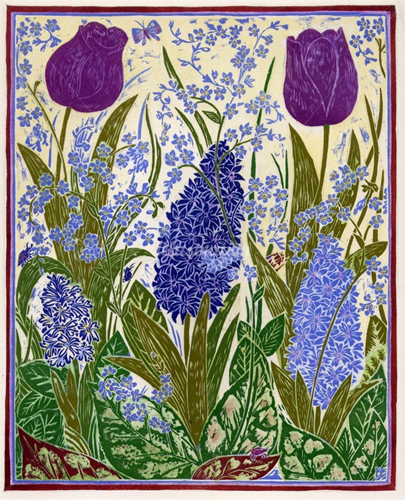
Natural history illustrators get inspired by the natural world around them, and by other illustrators like Hannah Firmin.
Hannah Firmin talks about her work
I recently went to Booth’s Bookshop to see Hannah Firmin discuss her beautiful work, her methods of creating illustrations, and her attitude to her career. (All photos and illustrations in this blog are copyright Hannah Firmin unless stated otherwise).
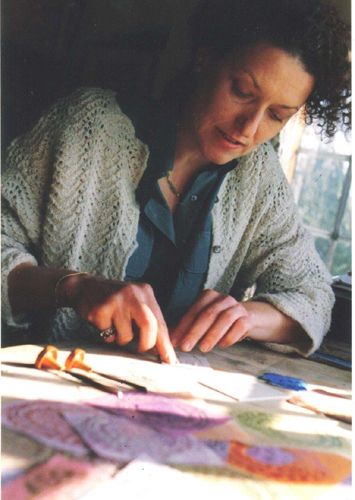
Hannah at work.
This event was put on by Arts Alive Wales, a local organisation that promotes links between artists across Wales.
The Importance of Drawing
Hannah began by stressing the importance of drawing, “Good Old Drawing”, and kept returning to the theme throughout the morning; if you don’t practice your drawing skills, then you are at a disadvantage. Drawing teaches you to see things differently, to learn the nature of your subject, to understand what you draw. I wholeheartedly agree with this; many’s the time when I’ve learnt far more about the structure of a plant or animal by drawing it from life than I even could from a text book, or from observing a photo. She showed us sketchbooks from when she was at Chelsea college of art, and later, we saw some of her current sketchbooks.
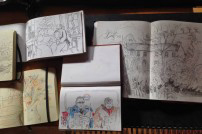
Some of Hannah’s sketchbooks from her college days (photo Emma Benyon)
Past work by Hannah Firmin
Next, she showed some of the vast array of work she’s produced. Wine bottle labels to illustrations for newspapers are shown. Books and food packaging have been graced with her work, along with greetings cards. She has illustrated hospital walls, and completed swathes of other glorious work.
What I love about Hannah’s subjects is that they are often based on the natural world. Be it an artichoke or a book cover, there’s often a beautifully observed and interpreted plant or animal in her work.

Hannah Firmin’s Technique and Materials
Hannah’s technique has evolved over the years, and is as fascinating as it is effective. She started out early, and loved print making. Lino-cuts, wood-cuts, then vinyl cuts all feature heavily. She uses wood engraver’s tools to work the vinyl or lino. She favours vinyl as it has a less grainy texture than lino. Her prints can be monochrome on paper (as with the artichoke above) or hand-tinted. They may be composed of two or more blocks. These can be inked up with different colours. She also makes collages. These are created from lino cuts printed onto a wide assortment of colour papers.
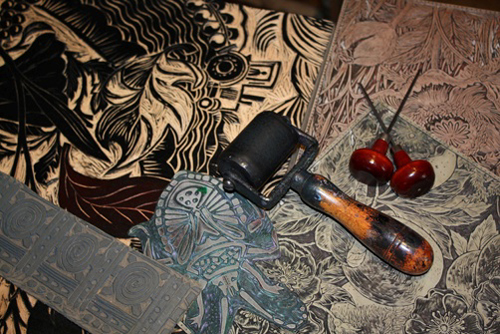
This photo shows some of Hannah’s blocks, her cutting tools, and a roller used to apply ink to her blocks (photo from an interview by Vicky Pearce of illustration web.com)
Collaged prints by Hannah Firmin
Below is an example of her collaged prints. I find these particularly beautiful. The quality of the print is clear, and the colours don’t get muddied by over-printing. This approach can be fiddly and exacting. The patience required to carefully cut out each individual component of one of these works is admirable. It’s not easy to stick them all together correctly to make a cohesive whole. Only by really examining the original piece up close can you get a feel of the work involved in creating it.

Tulips, hyacinth and forget-me-nots. Printed collage by Hannah Firmin.
Here’s another example of a collage of prints. This was done for the cover of Wild Hares and Hummingbirds by Stephen Moss (paperback).

Hannah Firmin and Alexander McCall Smith
Probably the most instantly recognizable use of Hannah’s work is the covers for the No.1 Ladies’ Detective Agency series. These books are by Alexander McCall Smith.
They are both visually arresting and a relevant link between cover and book content. So they work as pieces of art in their own right, and as book covers. Below is the artwork from the cover of the first book of the series.
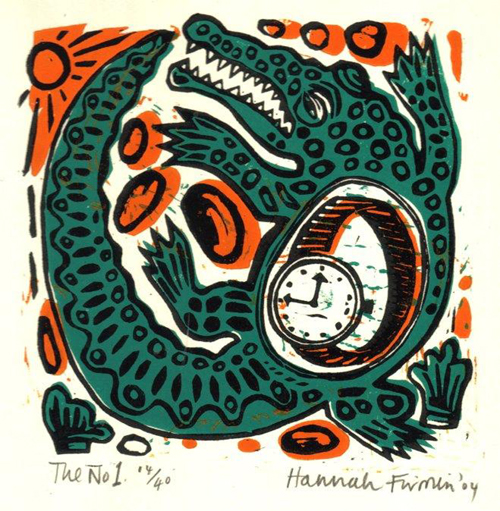
Here is the cover of a later book, “Tears of the Giraffe”.
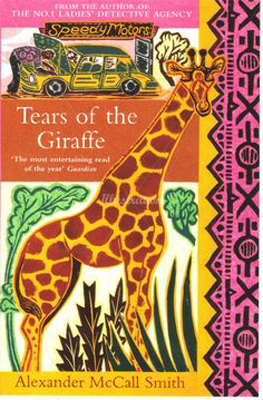
In fact, these covers have been so universally appreciated and successful that they caused some trouble. Whenthe publishers changed the illustrator for the series there was public outcry. No publisher makes public statements about the logic behind changing the “look” of a series of books. They did in this case!
Hannah Firmin’s hand-coloured prints
Hannah often produces a print and then hand-colours each one. She uses watercolour. This is time consuming, but effective, as the illustration below shows.
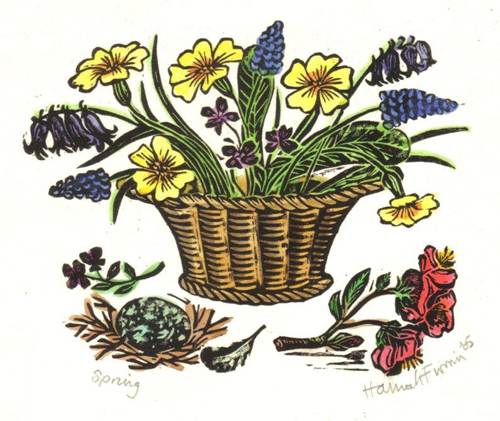
Spring by Hannah Firmin
It was a treat to hear Hannah discuss her work. I loved poring over her illustrations, sketchbooks, blocks, and prints. It’s heartening to see an illustrator at the very top of her game. She continues to innovate and try new approaches. Hannah also works flat out.
Because of her ongoing international success as an illustrator, the high quality and beauty of her work, and the fact that she empahizes the importance of drawing, I count Hannah Firmin as an inspiration. I urge you to visit her website to see more samples of her work and perhaps to buy a print (or two).

